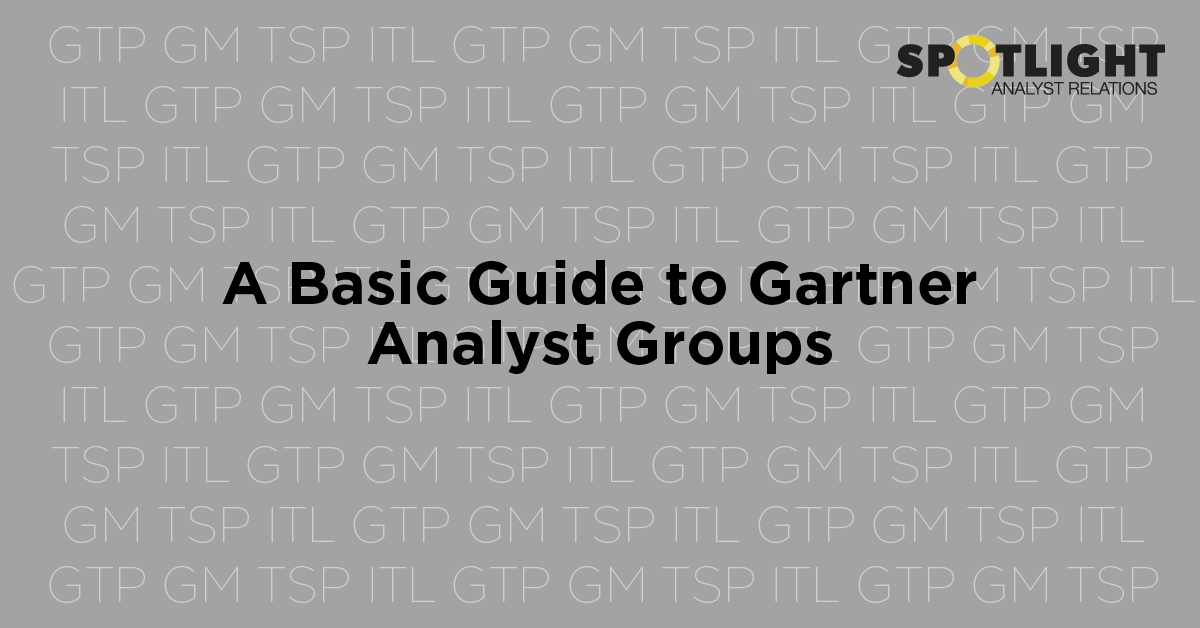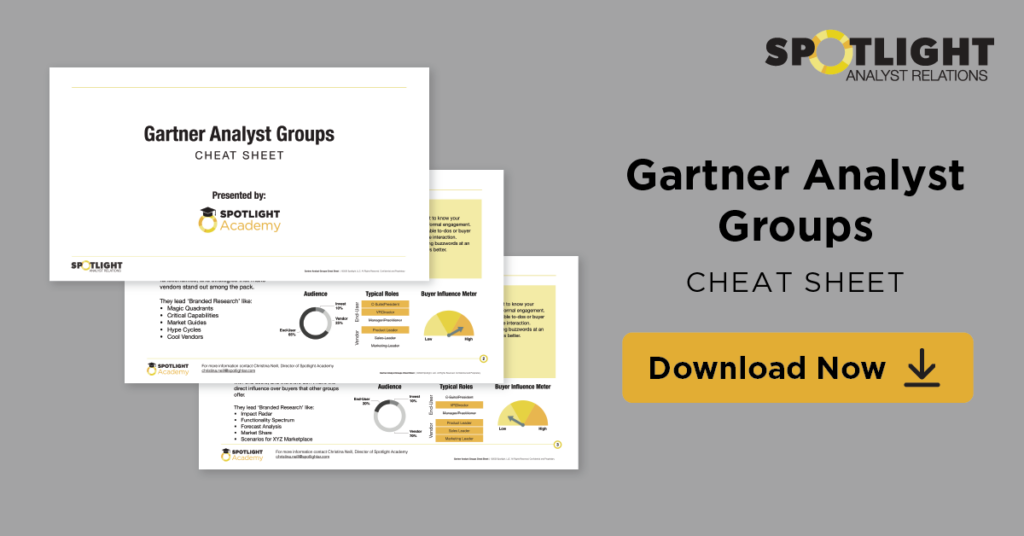by Christina Neill
January 21, 2020

Gartner is the world’s largest industry analyst firm by just about any metric, so it’s likely to house many of your key analysts. With more than 2,000 analysts and other experts around the globe, Gartner helps more than 300,000 clients from every major function across the enterprise solve business problems every day. Given the breadth of that scope, Gartner’s analyst roster is an enormous, complex ecosystem of teams, research communities, and key initiatives.
So, how should analyst relations professionals find the right Gartner analysts to work with? Which analysts can you learn from, especially to better understand market perception of your firm? Which analysts evaluate your products or services? And how should you work differently with the different groups? Whether you’re new to Gartner or have engaged with the firm for years, understanding the basic types of Gartner analysts is an important anchor to analyst relations strategy.
Gartner’s research organization is split into several distinct groups with different coverage charters, research outputs, and advisory expectations. These four are arguably the most common sections of Gartner that AR professionals encounter:
Each group of analysts works with a different audience, speaks to different roles, has varying influence over buyers and end-user professionals, writes specific types of research, and comes with its own sets of dos and don’ts for engagement.
Over the years, we’ve learned a lot about these groups of Gartner analysts, so we’re sharing a cheat sheet with snapshots of each to help you get started or simply refresh your awareness. Download it now to learn more nuances about each analyst group.

ITL analysts primarily talk to end-users, often for help with buying products or services. ITL analysts have their ear to the ground for buyer trends and can sniff out the features, functionalities, and strategies that make vendors stand out among the pack.
Analysts in the Gartner for Marketers team primarily talk to end-users in the marketing space, learning about the newest marketing and customer experience strategies and how cutting-edge companies use technology to boost their brand strategies. Vendors typically work with these analysts to understand the market’s needs in MarTech and AdTech, Customer Experience, Branding, Marketing Data and Analytics, and several other topics. At roughly eight years old, this section of Gartner is relatively new, but it has grown rapidly – all the more so with the 2017 acquisitions of L2 and CEB.
TSP analysts primarily work with vendors on their product strategy, go-to-market initiatives, and overall business efficiency. Most TSP analysts were leaders in the roles for which they write and advise, and can offer specific advice on how to maneuver within tricky markets. However, most TSP analysts rarely work with end-users, and therefore don’t have the direct influence over buyers that other groups offer. Nevertheless, thanks in part to their understanding of successful vendor strategy, these analysts often are co-authors for Magic Quadrant evaluations.
GTP analysts, many of whom came to Gartner via the 2009 acquisition of the Burton Group, are experts in their given field and are often able to advise on strategies down to specific lines of code. End-users work with GTP to fix particularly sticky tech issues. Vendors can work with GTP to understand how their tools are being used day-in and day-out, and to learn how future versions can be built to accommodate an array of use cases. While GTP authors don’t write traditional 2×2 evaluative research, they can influence buyers by getting past marketing buzzwords and analyzing the details of solutions to determine a proper fit for specific use cases.
These four groups aren’t exhaustive – Gartner also has analysts specifically for CIOs, as well as leaders in supply chain, finance and accounting, HR, legal, specific industry verticals, and more.
While understanding these groupings can provide an idea of what an analyst typically encounters in his or her role, it’s important to remember that each analyst is unique and has a fluid set of expectations surrounding written research and advisory. Not all Magic Quadrant authors are ITL and Marketing analysts, and GTP analysts aren’t the only ones who are able to dive deep into tech specs. In fact, there are often layers of analyst collaboration and review across teams for many research notes, and some analysts not represented on a report’s author line can actually have an enormous impact on the research. Selections of branded research are likely to change as these teams evolve as well.
For more information, including audience basics, buyer influence, and interaction dos and don’ts for these Gartner analyst groups, download the cheat sheet now.